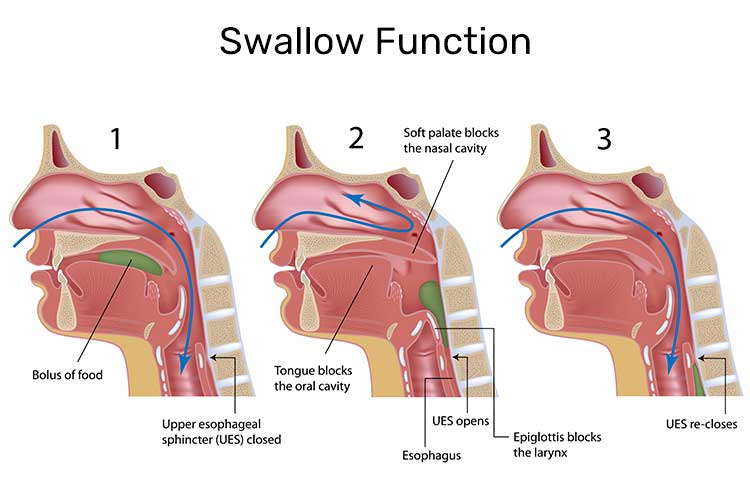Introduction
Dysphagia, a term that includes various ingesting troubles, is a condition that dramatically impacts people' lifestyle. This post intends to elucidate the spectrum of dysphagia and its ramifications for care staff education. With a boosting number of individuals diagnosed with dysphagia as a result of age-related conditions or neurological conditions, it's vital for caretakers, registered nurses, and various other health care professionals to be well-versed in this subject. Understanding the Range of Dysphagia: Fundamentals for Care Staff Education will shed light on the value of dysphagia training for carers and highlight crucial training courses available.
Understanding the Spectrum of Dysphagia: Fundamentals for Care Staff Education
Dysphagia can materialize in various types, ranging from moderate problems to complete lack of ability to swallow. Comprehending the subtleties of dysphagia is vital for treatment team as it permits them to provide tailored assistance and protect against significant difficulties such as desire pneumonia or poor nutrition.
What is Dysphagia?
Dysphagia refers to a swallowing disorder that can affect any type of stage of the swallowing procedure:
- Oral Stage: Difficulty eating or controling food in the mouth. Pharyngeal Phase: Problem moving food down the throat. Esophageal Phase: Issues with food traveling down the esophagus.
Being familiar with these stages aids care personnel identify where people might struggle and what treatments are necessary.
Types of Dysphagia
Understanding various types of dysphagia enables better monitoring strategies.
1. Oropharyngeal Dysphagia
This type occurs when there is difficulty in starting ingesting as a result of neurological problems (e.g., stroke or Parkinson's illness) or anatomical problems (e.g., tumors).
2. Esophageal Dysphagia
Characterized by the feeling of food getting embeded the throat or breast, this type commonly results from esophageal strictures, tumors, or mobility disorders.
Signs and Signs of Dysphagia
Care staff ought to recognize key indicators that may suggest dysphagia:
- Coughing throughout meals Choking on food or liquids Gurgling voice Weight loss Avoidance of particular foods
Recognizing these signs early can lead to timely intervention.
The Importance of Dysphagia Training for Carers
Training programs focusing on dysphagia equip caretakers with expertise and abilities needed for efficient patient care.
Why Is Training Essential?
Patient Security: Proper training lowers threats related to swallowing difficulties. Improved Lifestyle: Well-informed caretakers can improve dish experiences for patients. Confidence Structure: Training instills confidence in care team when dealing with intricate nutritional needs.Components of Dysphagia Training Programs
1. Composition and Physiology
Understanding the makeup associated with ingesting aids in identifying prospective problems.
2. Evaluation Techniques
Learning how to analyze a client's ingesting ability is essential for identifying appropriate interventions.
3. Dietary Modifications
Training consists of details on texture-modified diet regimens and risk-free feeding techniques.

Dysphagia Care Training Programs Available
There are countless courses devoted to offering thorough education on dysphagia management:
1. Online Dysphagia Training Courses
These training courses use versatility in finding out while covering essential topics like assessment methods, healing approaches, and dietary considerations.
2. In-Person Workshops
Interactive workshops supply hands-on experience with simulations and role-playing circumstances, enhancing discovering retention.
3. Specialized Dysphagia Training for Nurses
Nurses play an essential function in handling people with dysphagia; specialized training equips them with essential abilities required in medical settings.
Curriculum Introduction: What Does a Typical Dysphagia Course Cover?
|Module|Summary|| ---------------------------------|--------------------------------------------------|| Composition & & Physiology|Basic understanding appropriate to ingesting|| Indications & & Symptoms|Determining dysphagic conditions|| Analysis Techniques|Devices made use of to review swallowing abilities|| Intervention Strategies|Nutritional adjustments & & feeding techniques|| Emergency situation Monitoring|Managing acute cases associated with dysphagia|
Dysphagia Assistance Resources for Care Staff
Having access to sources can greatly improve care personnel's ability in managing dysphagic clients properly:
1. Expert Organizations
Organizations such as the American Speech-Language-Hearing Organization (ASHA) supply useful materials on best methods for handling dysphagic patients.
2. Online Forums & Support Groups
Engaging with fellow professionals via on-line forums enables sharing experiences and services pertaining to complicated cases.
3. Educational Literature
Books and write-ups concentrated on dysphagia deal detailed insights right into advancing practices within this healthcare niche.
FAQs about Dysphagia
1. What creates dysphagia?
Dysphagia can arise from numerous factors including neurological disorders, aging, cancer cells treatments, or structural concerns within the throat or esophagus.
2. Just how is dysphasia diagnosed?

3. What prevail therapies for dyslexia?
Treatment choices range from nutritional adjustments (structure changes) to rehabilitation therapies aimed at strengthening muscle mass associated with swallowing.
4. Is there a specific diet plan advised for people with dyslexia?
Yes! Texture-modified diets are frequently advised based upon individual evaluations; these can include pureed foods or thickened liquids depending on extent levels.
5. Can dyslexia result in other health complications?
Absolutely! Individuals with untreated dyslexia face boosted dangers such as goal pneumonia due to improper ingesting auto mechanics resulting in food getting in lungs as opposed to stomachs.
6. How can I get trained in handling individuals with dyspraxia?
Numerous programs are available varying from online courses to intensive workshops focused specifically on giving vital skills required for efficient administration approaches connecting directly back towards dyslexia training benefits of dysphagia training courses goals!
Conclusion
In recap, recognizing the range of dysphagia is paramount not only for making sure patient security yet additionally enhancing their quality of life with ideal nutritional adjustments and encouraging steps taken by mindful care team trained appropriately via specialized dyslexia training Offering effective dyslexia care training equips caregivers with required expertise while preparing them for real-world obstacles faced on a daily basis when caring about people experiencing this problem-- therefore leading towards generally improved outcomes!

The value behind appropriate education and learning around dyslexia support can not be overstated; it holds tremendous capacity when exercised diligently across numerous setups where people might call for aid navigating their way via everyday dishes securely without jeopardizing wellness requirements! Highlighting recurring knowing possibilities like participating in appropriate dyslexia courses will eventually produce a setting favorable towards accomplishing optimal results while promoting trust fund within those getting such very useful services given by proficient experts furnished well enough take care of complexities surrounding these concerns head-on!